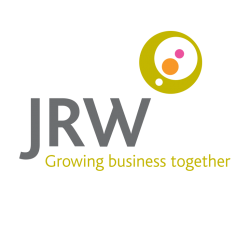SELECTING A PENSION SCHEME FOR AUTO ENROLMENT
Looking at the options available to you and the areas that you should focus on when selecting a workplace pension scheme for automatic enrolment.
By Jim Petrie, DipPFS, JRW Financial Services

Workplace Pensions is a government initiative to increase private retirement savings. Auto enrolment affects every employer in the UK, even if you only employ one person, and requires all employers to put eligible employees into a qualifying workplace pension scheme by law from January 2016. If you need to get a pension scheme for automatic enrolment, this article provides information on the options available to you and the areas that you should focus on when selecting a pension scheme.
How does a workplace pension scheme work?
A workplace pension is a way of saving for retirement which is arranged by an employer. Contributions to this pension scheme can come from three places:
1. The employer contributes a percentage of the member of staff’s salary.
2. The member of staff contributes a percentage of their salary.
3. Tax relief from the government.
The amount of income that members of a pension scheme get at retirement will depend on:
• How much has been paid into the scheme.
• How investments perform.
• The age at which members retire and how long they have been members of the scheme.
What types of pensions are available?
There are two main types of pension scheme:
Defined benefit (DB) pension scheme
These are sometimes called ‘final salary schemes’. A DB pension scheme is one where the amount paid to the member of staff is based on the number of years they’ve worked for you and the salary earned rather than the value of investments.
In defined contribution (DC) pension schemes
Sometimes referred to as ‘money purchase schemes’, the employer and member of staff pay in a set amount each month which is invested to build up a retirement fund. The majority of employers are likely to use a DC scheme for automatic enrolment.
Which type of pension scheme should you choose?
DC schemes are increasingly used by employers as they offer a cost effective way to enrol their
staff into a pension scheme. The type of scheme most likely to be available to you is a scheme run
by a large, specialist provider that is designed to be used by many different employers. This may
be known as a ‘group personal pension’ or a ‘master trust’.
There are a number of different providers and options available to you when choosing a DC scheme as follows:
Government scheme
The National Employment Savings Trust (NEST) is a pension scheme that has been established by the government and has a public service obligation to accept all employers that apply to join it.
You can find more information at www.nestpensions.org.uk.
Master trusts and group personal pensions
Master trusts and group personal pensions are types of DC schemes that are designed to be used by many different employers. They tend to be run by large specialist pension providers. Because of their size and the way they operate, they generally cost less and require less involvement from employers compared to other schemes. Master trusts are run by a board of trustees and group personal pensions are run by financial service companies, eg insurance companies and investment managers.
Schemes with master trust assurance
The trustees of some master trusts have had their pension schemes independently reviewed to help them demonstrate that they meet certain standards of governance and administration.
Schemes listed by other industry bodies
Other schemes are available and information about pension schemes run by trustees can be found on the National Association of Pension Funds (NAPF) website.
What do I need to look for in a pension scheme?
If you currently have a pension scheme (perhaps called a stakeholder scheme), you should check
whether you can use it for your existing members. If you can’t use your existing scheme, you’ll need to choose a new one that meets the requirements of automatic enrolment.
CONSIDERATIONS TO MAKE:
Whether you are intending to use your current pension scheme for automatic enrolment or choose
a new one, there are a number of aspects that you will want to consider:
Can the scheme be used for automatic enrolment and will it accept you?
To be used for automatic enrolment the scheme has to meet certain criteria, eg it does not require members to do anything to become active members of the scheme or to make investment choices.
Other requirements that the scheme should meet include being an occupational or personal pension scheme and being tax registered. In addition, there are minimum requirements regarding the level of contributions that must be paid into the scheme. These requirements depend on the type of scheme it is. Some schemes offered for automatic enrolment may only accept employers with a minimum number of staff or who have staff above a certain level of earnings.
Will the pension scheme work with my payroll?
If you use payroll software you should check that it is designed to carry out all the automatic enrolment tasks. If it doesn’t, you should consider updating your software. Ask your payroll or pension provider if they have a checklist of the information they require and the tasks they will carry out for you.
Will the scheme generate letters for my staff?
You have to write to your staff to tell them what is happening and how automatic enrolment affects them. Some pension schemes may offer to do this for you.
What level of information and support will the pension scheme give me and my staff?
Pension schemes may offer you administrative support services such as processing opt-ins on your behalf, assessing your staff for automatic enrolment or providing dedicated support for your ongoing duties. For your staff, it’s important that the pension scheme you choose provides them with information about their pension savings. The scheme should regularly send communications to you and your staff. Some schemes may offer more online services too. If this is the case it should clearly explain:
• How much money they have saved.
• How their investments are being invested and how they have performed.
• What their projected savings will be at retirement.
• How much of their contributions will be taken in charges.
• Whether the desired retirement income can be achieved at the current rate of contributions.
Without this information, your staff will find it difficult to understand whether or not they are saving enough to give them the income they would like when they retire. Annual statements and other communications should help them understand how they are progressing towards their desired pension income.
What about costs and charges?
Pension scheme members pay charges to cover the cost of administering their savings.
Some schemes may have different charges for different members, for example charges based on their earnings level. Charges paid out of member savings in default investment arrangements are capped at 0.75% a year of the member’s fund.
Schemes may charge you to set up a pension scheme with them, for ongoing administration of the scheme or for both. Some schemes may also include an exit fee for employers who change pension schemes.
You should ask the provider what charges you and the scheme members will pay. It is important that you weigh up the costs and charges against the level of services that the scheme will provide – some of the services may make running automatic enrolment easier for you over the long term.
For help and advice about auto enrolment and choosing a suitable pension scheme then don’t hesitate to get in touch with Jim Petrie or Mike Ellis at JRW Financial Services.
